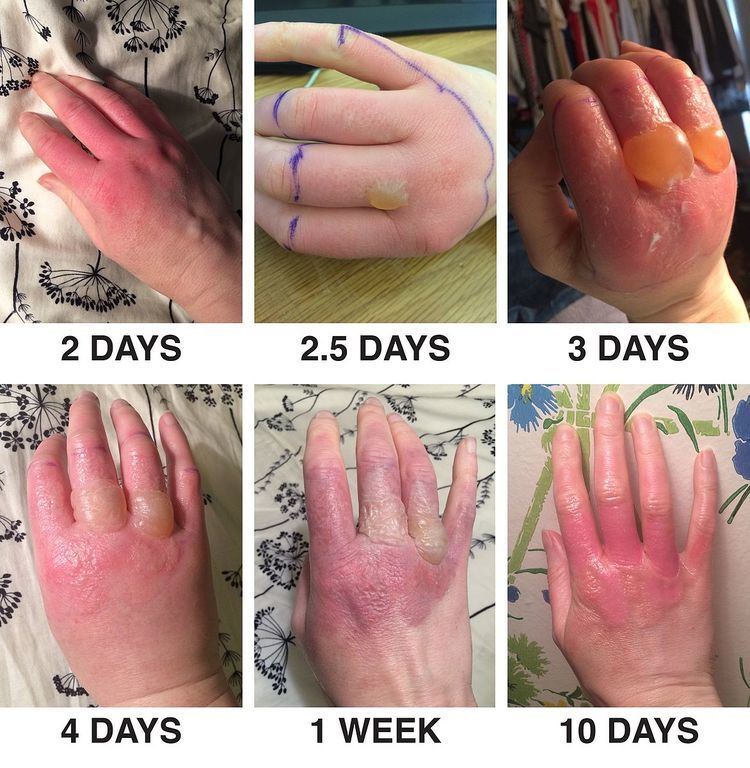Specialty dermatology DiseasesDB 31395 | ICD-10 L56.2 | |
 | ||
Phytophotodermatitis, also known as "lime disease" (not to be confused with Lyme disease), "Berloque dermatitis", or "Margarita photodermatitis" is a chemical reaction which makes skin hypersensitive to ultraviolet light. It is frequently mistaken for hereditary conditions such as atopic dermatitis or chemical burns, but it is caused by contact with the photosensitizing compounds found naturally in some plants and vegetables like parsnips, citrus fruits and more. Symptoms include burning, itching, stinging and large blisters that slowly accumulate over time.
Contents
Symptoms
The symptoms are equivalent to photodermatitis, but vary in severity. The skin condition is a cutaneous phototoxic inflammatory eruption resulting from contact with light-sensitizing botanical substances—particularly from the plant families Umbelliferae, Rutaceae, Moraceae, and Leguminosae—and ultraviolet light, typically from sun exposure. Phytophotodermatitis usually results in hyperpigmentation of the skin that often appears like a bruise. This may be accompanied by blisters or burning. The reaction typically begins within 24 hours of exposure and peaks at 48–72 hours after the exposure.
Phytophotodermatitis can affect people of any age. Because of the bruise-like appearance that is usually in the shape of handprints or fingerprints, it can be mistaken in children for child abuse.
Common causes
Treatment
Phytophotodermatitis can be prevented by staying indoors after handling the above substances. However, the primary triggering mechanism is UV-A radiation (320-380 nm) which windows are not guaranteed to filter out.
Many different topical and oral medications can be used to treat the inflammatory reaction of phytophotodermatitis. A dermatologist may also prescribe a bleaching cream to help treat the hyperpigmentation and return the skin pigmentation back to normal. If they do not receive treatment, the affected sites may develop permanent hyperpigmentation or hypopigmentation.
